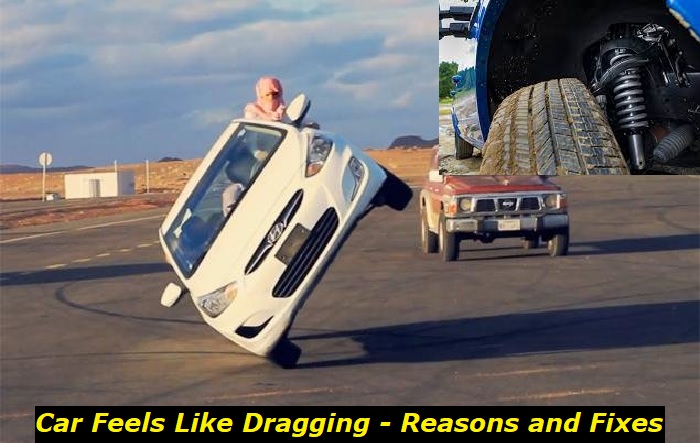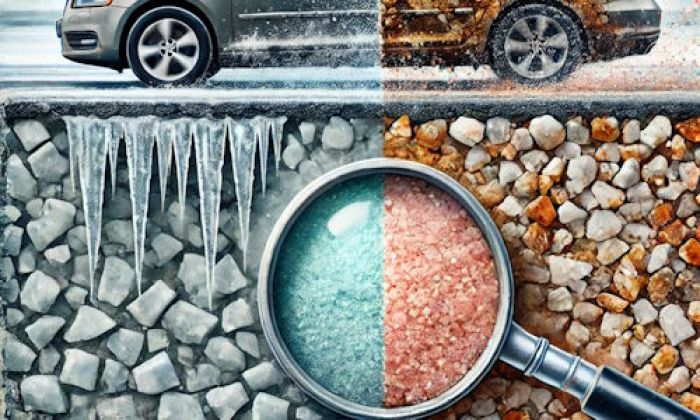Problems with acceleration are annoying. They most likely happen when something is wrong with your engine or transmission. But when your car feels dragging during acceleration, this is hard to explain. You should be careful with this issue and you should address it immediately because it obviously affects the safety of your driving as well as the safety of those driving their cars around you.
Engine power problems highlights
- Level of urgency:Medium
- DIY inspection:Possible but may be complicated
- DIY repair:Sometimes, possible
- Cost of repair:$200 - $650
- Can you drive?In most cases, yes
- Commonreasons:A largelist of reasons, including fuel and air supply, electronics, glitches, but not limited to those.
- Ways to fix:Use code scanner to locate the problem and solve it

How to find out the proper symptoms of the problem
Finding the symptoms is the key step in locating the issue that may cause dragging in your vehicle. First of all, think of what you have done with your car recently. Maybe, you bought new tires or you had wheels rotated. Maybe, your vehicle got into a little road accident or was damaged in some other way.
Also, register how exactly your car misbehaves. You may even want to write that down to explain everything in detail to your mechanic. The more you tell this person, the easier they will find the reason.
Look at the speed when you notice the first sign of dragging. Register the RPM when this happens. Also, is something happening with the steering wheel, do you feel that it turns unintentionally and you have to hold it tight? How bad is the dragging effect? Does your car really turn a little or it just feels like it's trying to drag?
After you answer all these questions, it will be much easier to locate the issue. In most cases, you will be able to find the answer even before you get to the repair shop.
What are the most common reasons for a car dragging when accelerating?
We've checked the symptom with several experienced car mechanics and also asked professional drivers. This helped us compile a list with a couple of dozens of possible reasons. After that, we checked these reasons in forums and chose the most common ones. Now, we are going to tell you why your car may feel like dragging when you accelerate.
Here are the most common issues:
1. Uneven tire pressure
When the pressure in your tires is uneven, the car will feel like going to one side all the time. You will have to steer your vehicle all the time - it just won't go straight. Checking the tire pressure is an easy task - most gas stations will have tools for this. And you may even ask some other drivers if they have a tire compressor that they can lend you for 5 minutes.
Always control tire pressure and never drive your vehicle with uneven pressure because this may lead to bad control.
2. Old or unevenly worn tires
If your tires are sleek, the wheel can't get the needed grip on the road and the wheel may even slip sometimes. This will lead to abnormal issues when accelerating. For example, the car may feel like dragging and it can actually drag.
Always check the tires in your vehicle and buy new ones if your old tires are worn out. Driving a car on bad tires is not safe at all!
3. Winter roads
If your vehicle stands on the icy or snowy road and you press the gas pedal, it will obviously drag before it goes forward. The wheel doesn't have a good grip on the slippery road and it will slip and rotate faster than needed. This may take some time for electronic systems to jump in and take control of the crazy drive wheel. In this case, you may need to drive more carefully - no repairs are needed.
4. Unbalanced wheels or bad angles
Wheel balance is super important for proper driving. Your wheels may have lost several balancing weights and now they are vibrating when you drive. This may cause problems at higher speeds and in some bad cases, this may also lead to car-dragging effects.
If wheel angles are affected, your vehicle may do a lot of bad things. Wheel angles change when you drive on bad roads, when you repair something in the suspension system, or just after some miles or years. Wheel alignment is very important, so check it every year or at least every two years when your vehicle is on regular maintenance.
5. Drive system problems
In front-wheel drive cars, this doesn't happen too often. Also, the drive system problems in FWD vehicles won't create the effect of dragging, in most cases.
But if you have an RWD or all-wheel-drive car, one of the wheels may suddenly get more power than the other and this may cause a dragging effect. Check the drive system and transmission in terms of failures to make sure this is not the case.
6. Brake issues
In some cases, dragging during acceleration may occur when there is a problem with the rear brakes. One of the wheels isn't unblocked when you depress the brake pedal and this causes dragging - the car just goes to one side all the time. Also, this may not be consistent. Once you press the brake and everything is OK but the other time this effect occurs.
Also, front brakes may also fail and cause dragging. Checking brakes is an important part of every regular maintenance event. So, make sure your mechanic completes all the needed inspections.
7. Improper weight balance
This often happens with trucks but may also occur in other types of vehicles. If you put all the load on one side of the vehicle, it will significantly lean on one side. This will cause bad steering and you will feel like the car is dragging. The effect will be even more noticeable when you accelerate.
Check if all the load in your vehicle is properly balanced. This will help you exclude this reason from the possible issues.
What should you do immediately if you notice dragging?
If you understand that your vehicle is dragging, you should stop the car safely on the right side of the road. Driving it just as before is not an option - this may not be safe anymore. You should anyway make it as safe as possible for you and all people around you. So, experimenting with acceleration and checking your vehicle right on the road with other cars around is the worst idea you may come up with.
Here's what you should do:
- quickly register everything you feel when your vehicle accelerates;
- then park your car on the right side of the road and turn on the emergency lights;
- look at your tires and wheels - make sure they are OK;
- think about possible weight imbalance in the car and solve the problem;
- if everything is OK, you may slowly drive on the right side of the road with your emergency lights on;
- drive to the nearest repair shop or dealer and have the vehicle inspected right away;
- if it's impossible, drive the vehicle to the nearest secure parking lot and leave it there;
- after you have time to solve the issue, come back to the car and take it to the repair shop.
Most of these problems need professional repair. Even locating the issue will not be that easy. In addition to what we've listed above, you can also face other difficulties such as steering system problems, suspension problems, car body issues, etc. It's always best to have the car inspected by professionals and find the problem.
How can you prevent this from happening?
Preventing your car from dragging is not really an easy task. Sometimes, this may happen because of unexpected reasons such as suspension problems or steering failures. If this is the case, you will just need to solve the issue quickly. But you can't really prevent some of the failures from happening.
But there are some things you can influence:
- always buy new tires once you see the old ones are sleek, old, or damaged;
- have your wheels aligned once every two years or more often;
- have the vehicle's suspension checked at every regular maintenance;
- never load just one side of your vehicle - spread the loads evenly between both sides;
- after any accident, check if the car body and frame are OK;
- address all minor problems with your car promptly.
If you follow these tips, you will be OK and will avoid the consequences of breakdowns, in most cases. This doesn't mean you will be able to avoid dragging if something unexpected fails though.
About the authors
The CarAraC research team is composed of seasoned auto mechanics and automotive industry professionals, including individuals with advanced degrees and certifications in their field. Our team members boast prestigious credentials, reflecting their extensive knowledge and skills. These qualifications include: IMI: Institute of the Motor Industry, ASE-Certified Master Automobile Technicians; Coventry University, Graduate of MA in Automotive Journalism; Politecnico di Torino, Italy, MS Automotive Engineering; Ss. Cyril and Methodius University in Skopje, Mechanical University in Skopje; TOC Automotive College; DHA Suffa University, Department of Mechanical Engineering






Add comment